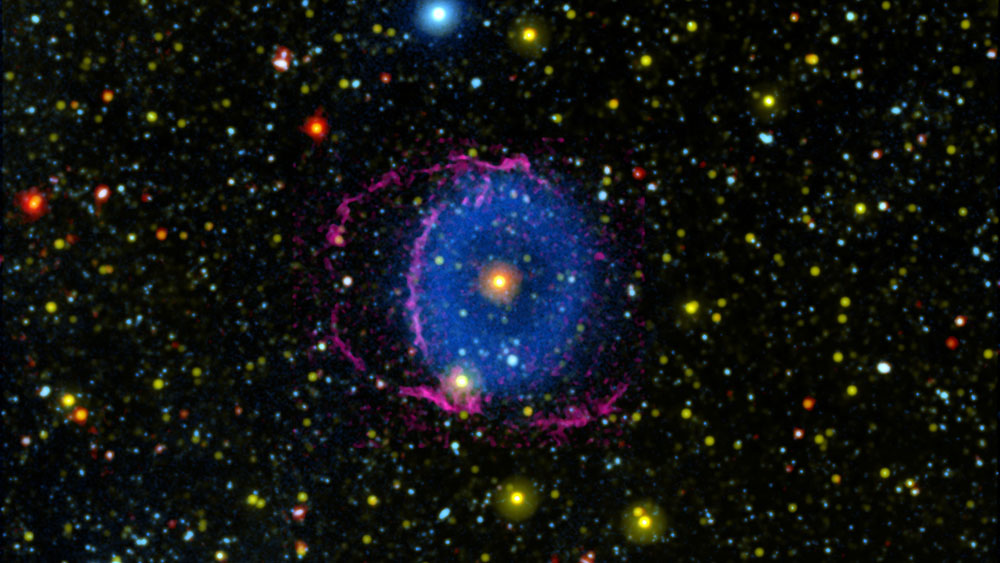Astronomers Crack the Case of the Blue Ring Nebula
Posted: Sun Nov 29, 2020 7:18 pm
Smithsonian Magazine
Theresa Machemer wrote:
About 6,200 lightyears from Earth, a mysterious star appears surrounded by a doughnut of foggy blue light. It’s an old-looking star sitting in a young star’s dust cloud, and scientists have been trying to figure out how it formed since they first spotted it in 2004. Now, a team of astronomers says they’ve cracked the case, Monica Young reports for Sky & Telescope.
In a paper published on November 18 in the journal Nature, the research team explains how a collision of two stars several thousand years ago would create the structure observed today. It’s currently the only known example of a two-star collision that’s in the middle of transitioning from its debris-strewn initial stage to the late stage when the debris would become invisible.
Click to play embedded YouTube video.
AnnThe strange star is not surrounded by a blue ring after all. Instead, it's flanked by a pair of cones that face outward, like megaphones pointing in opposite directions. Each cone is too faint to be observed on its own, but because one cone is lined up behind the other from Earth’s point of view, telescopes like NASA’s Galaxy Evolution Explorer (GALEX) could make out the shape of a blue ring...
(Columbia University theorist and astronomer Brian) Metzger suggested that the blue ring nebula, with its strange cones and dust disk, could represent the events just a few thousand years after the collision of two stars.
